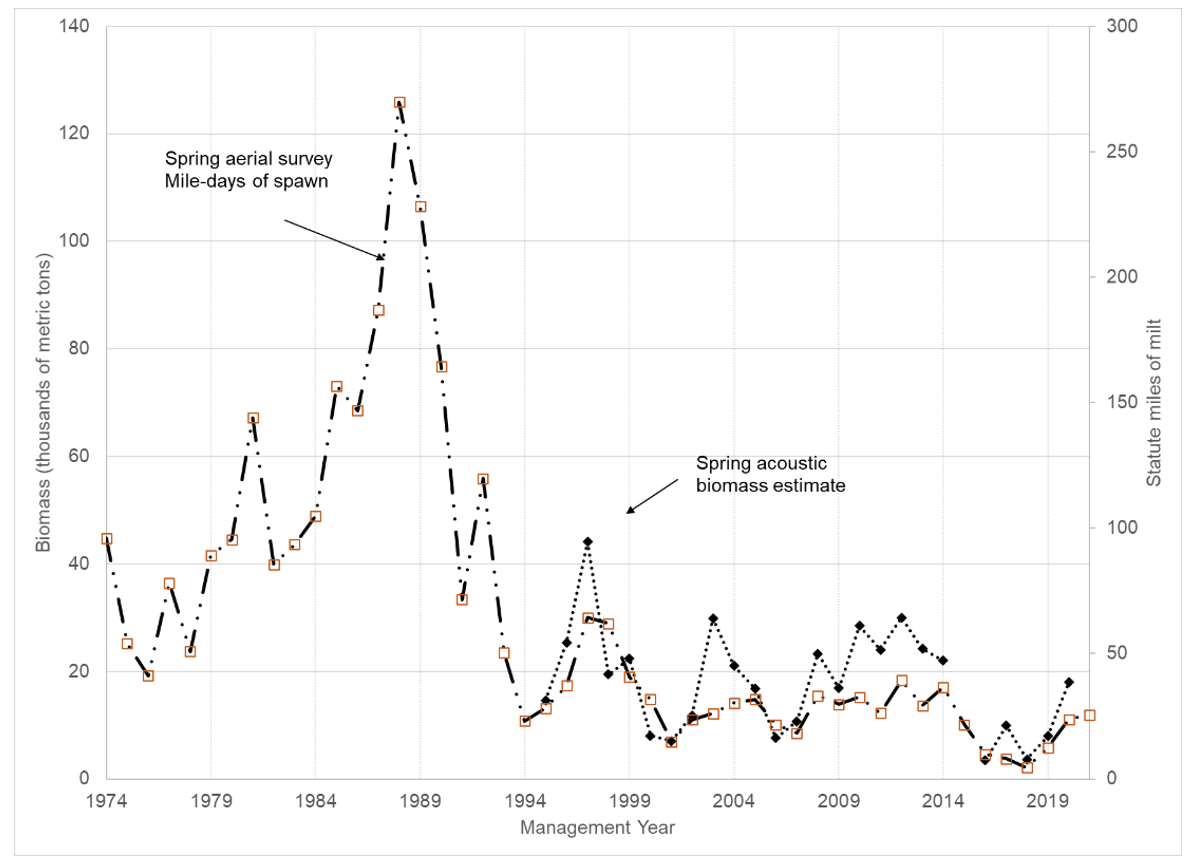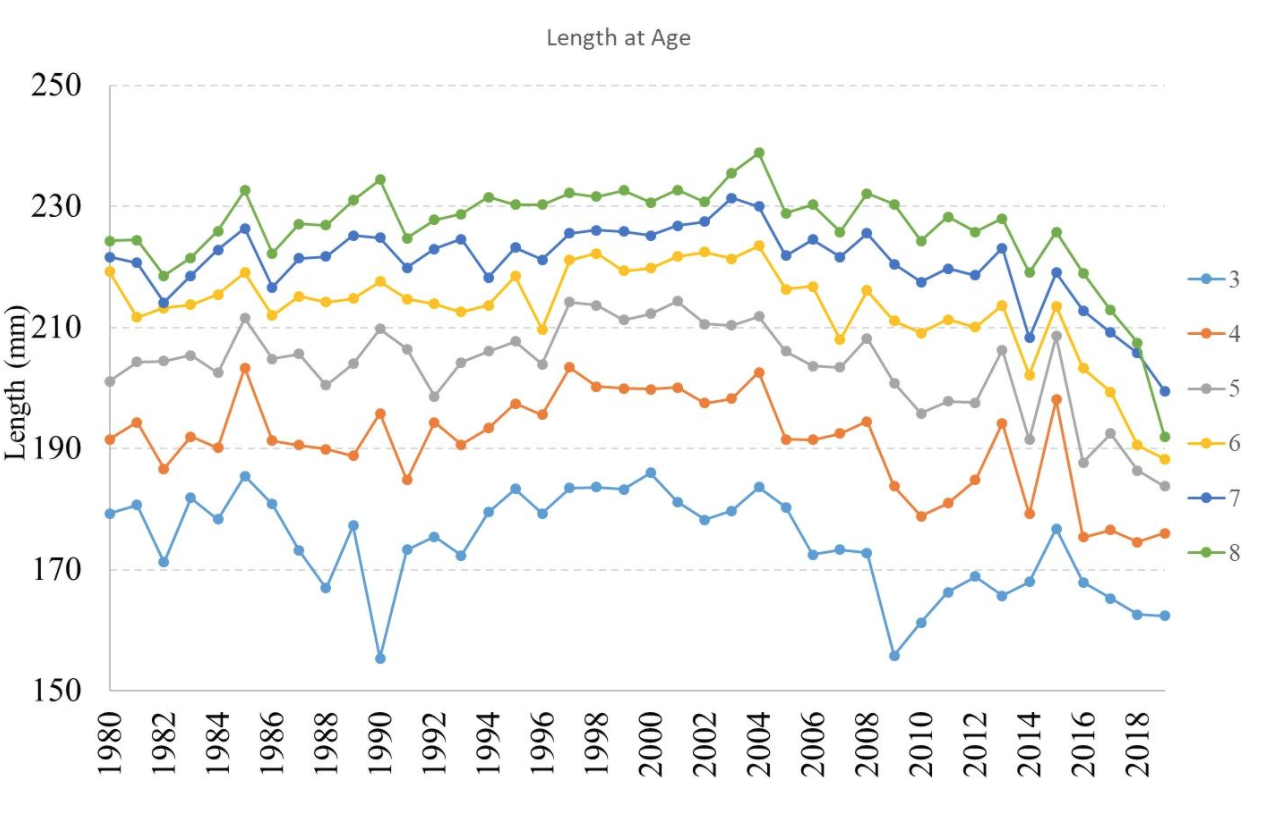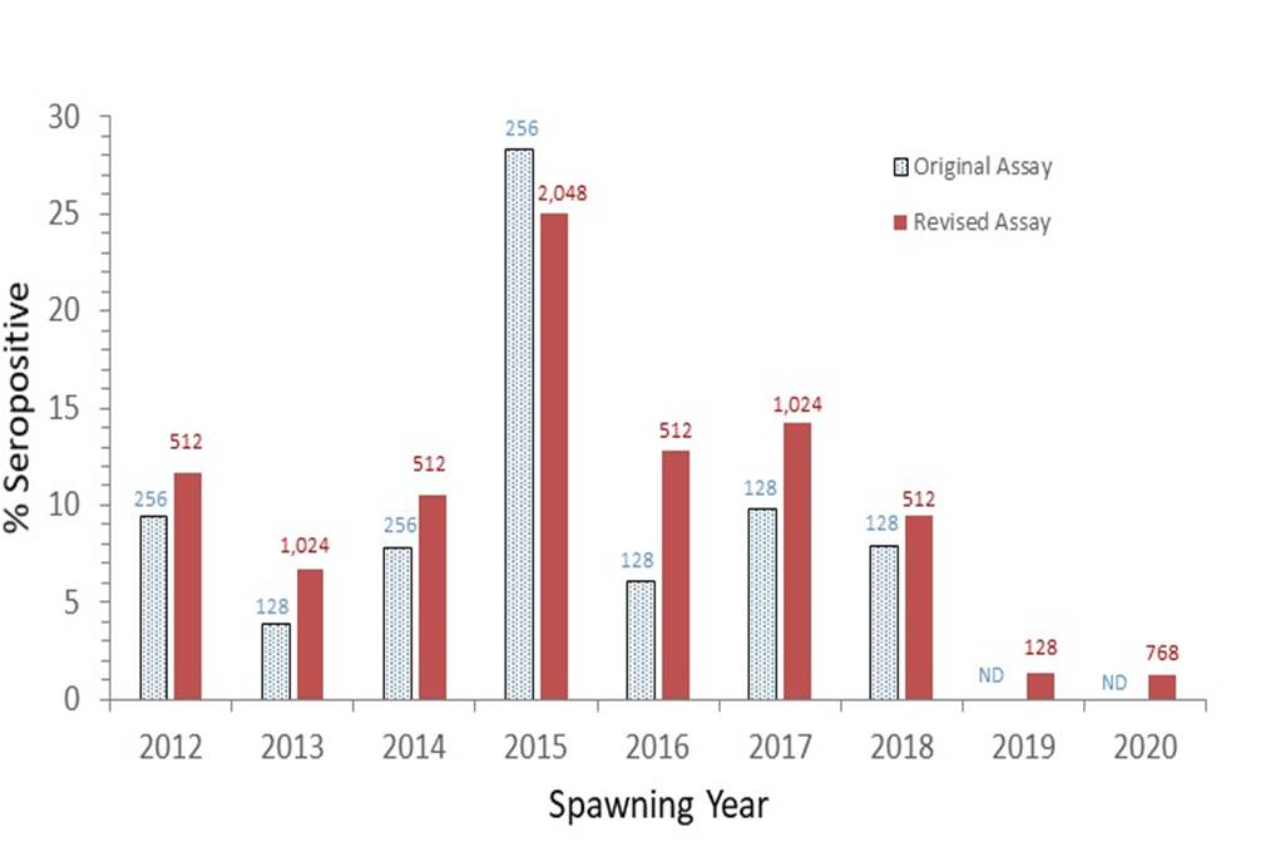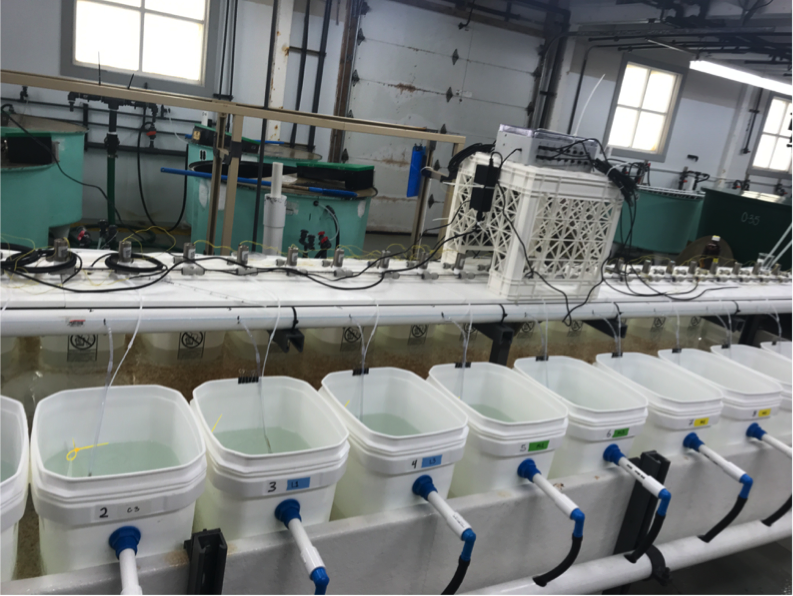Status of Prince William Sound Herring
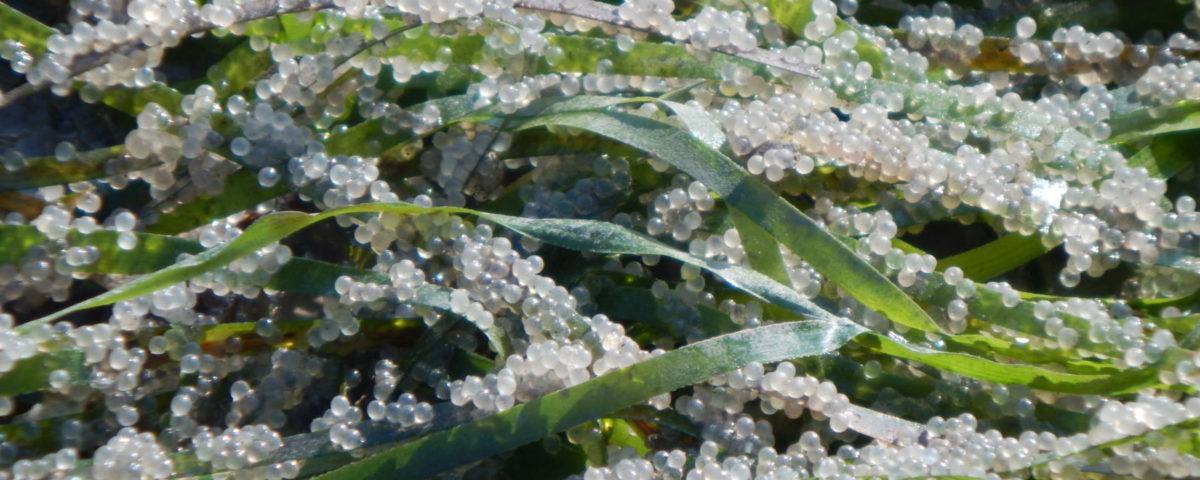
PROJECT
Status of Prince William Sound Herring
Background
Prince William Sound (PWS) Pacific herring (Clupea pallasii) population estimates are generated annually by Herring Research and monitoring (HRM) team with a Bayesian age-structure-assessment (BASA) model. The model inputs include aerial surveys of mile-days of spawn (total number of miles of spawn observed each spring), acoustic surveys of spawning biomass, age-sex-size, historical egg deposition, and disease prevalence data. The PWS surveys used by the model are conducted each spring. The survey area covers traditional spawning regions within Prince William Sound and occasional surveys in the Kayak Island area, although Kayak Island is not included in the inputs to the BASA model.
Methods
Several datasets are used by the BASA model to estimate the herring population. The mile-days of milt surveys collected by ADF&G extend back to the early 1970s, making this the longest abundance time series used in the model. Acoustic surveys collected by the Prince William Sound Science Center started in the mid-1990s. ADF&G has collected herring age, sex, and size data from PWS commercial fisheries and fishery-independent research projects since 1973. Egg deposition scuba surveys were conducted by ADF&G in 1983, 1984, and 1988-1997. Historical harvests from commercial pound, seine, and gillnet fisheries from 1980-1998 are also included as inputs to the model, although there have been no commercial herring fisheries in PWS since 1998. An output of the model is the annual median estimate of the biomass.
What we are learning
The BASA model estimated a declining trend in herring biomass in the early 2010s but shows a rapid increase beginning in 2019. Aerial surveys observed a record low level of mile-days of milt in 2018 (Figure 1) with a 5-fold increase by 2020. The weight and length at age values in age-5 and 6 fish have been decreasing since 2015 meaning the population is composed of smaller than normal fish (Figure 2). There are very few older fish being observed in the population as well. Disease researchers on the HRM team observed high levels of antibodies to the VHS virus in 2015 (Figure 3). This suggests that an outbreak of the pathogen occurred between 2014 and 2015.
Beginning in 2019 we saw a rapid increase in biomass. This appears to be driven by recruitment of fish from the 2016 year class. The 2016 year class was a successful year class for herring throughout the Gulf of Alaska with recruit to spawner metrics across the region being nearly four times greater than the next most successful year class since 1980. The antibody data shows very low levels in recent years implying that the newly recruited fish were not previously exposed to VHS. Herring biomass continued to increase in 2020 as the 2016 year class continued to recruit into the spawning biomass. The 2021 survey results showed nearly as many schools as was observed in 2016, which suggests the potential for another large year class (Figure 4). The herring population is beginning to increase but will need additional large year classes to join the spawning biomass to continue this trend.
Figure 1. Mile-days of milt in Prince William Sound based on aerial surveys and biomass estimates from acoustic surveys. Includes preliminary results of the 2021 survey from the Alaska Department of Fish and Game.
Figure 2. Weight and length at age data collected by ADF&G. In 2019, so few fish age 6 and greater were caught that the length data for those ages is questionable.
Figure 3. Two techniques used to quantify VHS antibody levels observed by the disease researchers.
Figure 4. The school-size weighted number of age-1 herring schools in Prince William Sound.
PRINCIPAL INVESTIGATOR
Scott Pegau, Ph.D.PWS Science Center
Mary Anne Bishop, Ph.D.
PWS Science Center
Trevor Branch, Ph.D.
University of Washington
Jennifer Morella
ADFG Cordova
Paul Hershberger, Ph.D.
US Geological Survey
Kristen Gorman, Ph.D.
PWS Science Center
Pete Rand, Ph.D.
PWS Science Center
Maya Groner
PWS Science Center
Andrew Whitehead, Ph.D.
University of California, Davis
Bia Dias
University of Washington


